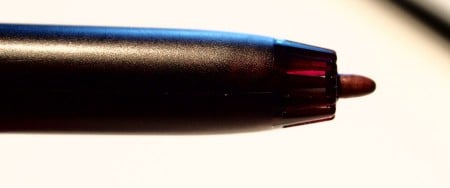We’re big fans of Australian made gadgets, and a new concept by three people working locally aims to offer the biggest sheet of online paper for anyone working on an idea or project at the same time.
In what could essentially be both the beginning and end of the pen and paper notepad – even the digital one – Collusion aims to offer a networked shareable document in the cloud that can be as big as your imagination and infinitely editable.
The project came as a result of a few guys who all had laptops and iPads, but got sick of carrying around the heavy 15 inch computers. Instead, they tried to come up with a way of making their tablets into perfect tools.
“The problem was the way we thought of the tablet, and the way people still think of note taking,” said Robert Yearsley, one of the three member team responsible for starting Collusion. “We thought, what if stop treating it like a piece of paper and think of it as a very sophisticated piece of technology.”

It took six weeks of basic development and a further 12 months of testing and refining to come up with the final product: an iPad accessory and app solution that utilises a pen emitting sound waves for tracking and a piece of software that could take hand-written notes, pictures, drawings, text from a keyboard, video clips, and a whole lot more, entering everything into the world’s largest private whiteboard.
Imagine being a student in university or high school and being asked to work on a project with your entire class. You have to design your own house, or come up with your own line of fashion apparel, or work on a short story or science project together.
Instead of meeting at school to take down notes in a hard copy form, you can all go home, pull out a tablet, and work on it digitally, with notes and drawings written by different team members appearing a little slower than real time. Move stuff around, colour things in, provide notes, and get a project to come together quickly, without anyone screaming “you’re hogging all the space.”

In a way, it’s like the film “Inception”, with a constantly evolving world at your disposal, except that world is a giant sheet of paper. More so and like the movie, there is an almost infinite amount of layering to the project, allowing you to add extra notes to something you’ve added by zooming in and adding even more information.
From there you can zoom in again, and again, and again, until you’ve added so much layered information that your entire project is mapped out in almost every way conceivable.

A perfect case for this is for a team making a movie, with a basic storyboard being made on the giant networkable whiteboard. Each time you draw a different scene, you could zoom in and add the script or dialogue for that section, allowing you to have not just a digital map, but a complete understanding of what’s going on.
Magazine and newspaper planners can put their entire layout on a sheet of this infinitely scalable piece of paper, gradually filling in the blanks with stories and ads and working from anywhere with a connection to the Internet. Home, work, vacation; it doesn’t matter. If your tablet and Collusion accessory are there, you can log on and work.
Even better, the Collusion application doesn’t store things in a proprietary way, taking advantage of the power of HTML5, the current language of the Internet.
Everything you write, draw, and add to your giant sheet of paper can be seen on any device that supports modern web browsing, including your laptop, desktop, smartphone, or tablet. It’s even possible that we’ll see Collusion made for Android and upcoming Windows tablets.
Our brief hands-on with the product this week showed a tool that, while unfinished, shows a lot of promise. It’s very easy to use and we can it being adopted in schools, work environments, possibly even replacing the conventional notepad, especially if it’s made to work with smartphones.
The small team of developers at Collusion say that the product will be heading to stores by Christmas for $139 RRP, with an iPad – any version from the second-generation or higher – currently required to use it. For more information, head to the Collusion site.










Converts my poor handwriting to text, I NEED this !
Seems no different than SyncSpace, except SyncSpace is already available with infinite zoomability for iPad, Android and the web.